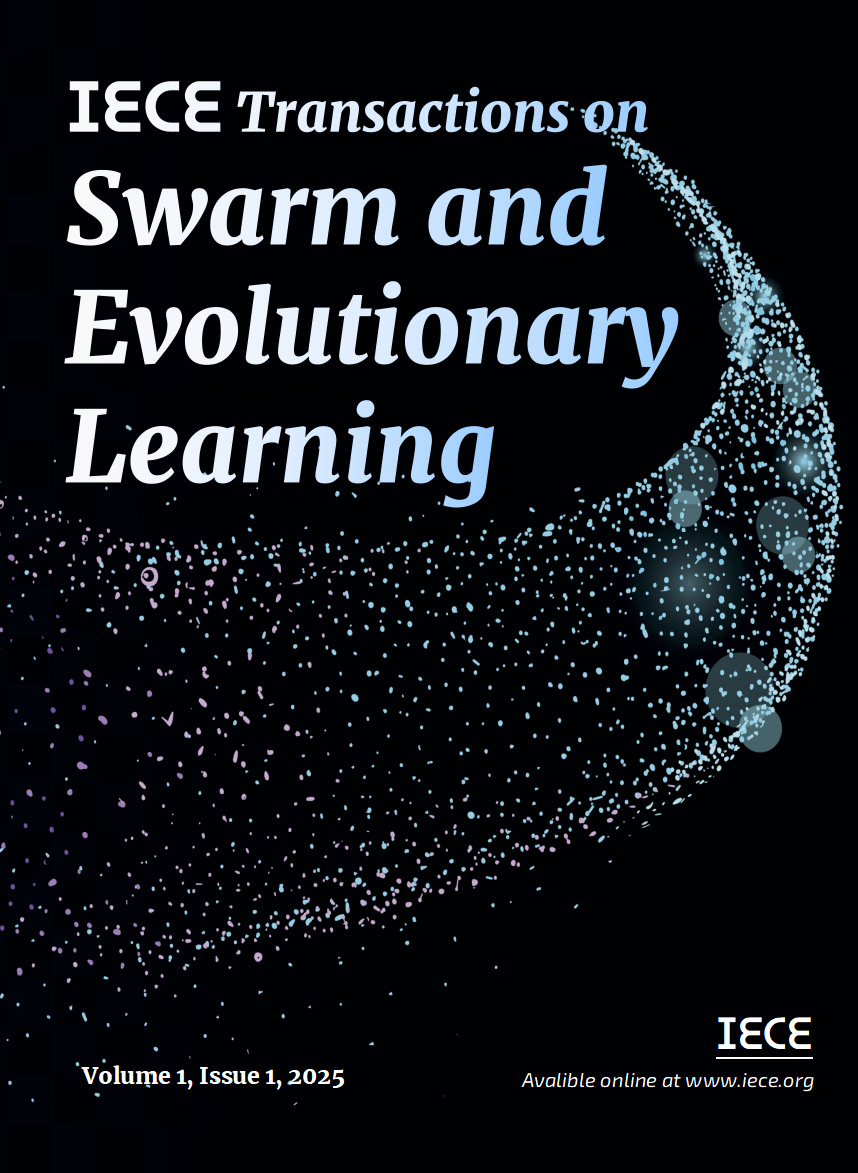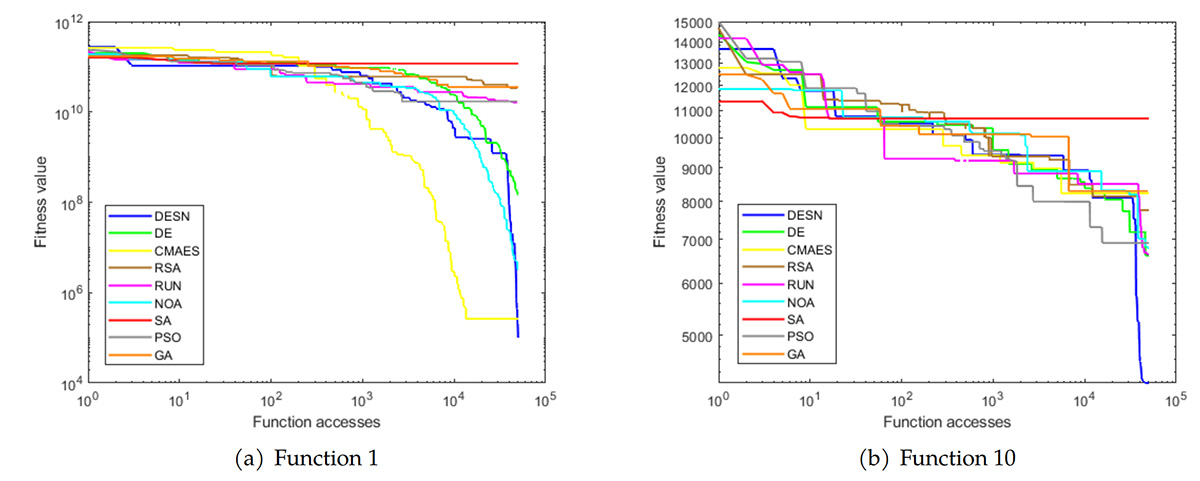Abstract
The Differential Evolution (DE) has stood as a cornerstone of Evolutionary Computation (EC), inspiring numerous approaches. Despite its foundational role, the selection stage of DE has received little attention, with only 2% of documented modifications in the literature on this aspect. Recent research has underscored the potential for significant algorithmic improvement through thoughtful modifications to this critical stage, particularly in accelerating the exploitation phase. This study introduces a novel EC strategy rooted in DE principles. To enhance algorithmic exploration, a systematic decision-making process regarding function evaluations is employed to select between two of the most prevalent mutations in the field. Similarly, a new selection operator is introduced to augment the exploitation phase by comparing each individual with its respective 25% neighborhood population. The proposed algorithm, Differential Evolution with Selection by Neighborhood (DESN), undergoes comprehensive evaluation against eight classical and recent approaches, leveraging the CEC-2017 set of benchmark functions.
Data Availability Statement
Data will be made available on request.
Funding
This work was supported without any funding.
Conflicts of Interest
The authors declare no conflicts of interest.
Ethical Approval and Consent to Participate
Not applicable.
Cite This Article
APA Style
Reyes-Davila, E., Haro, E. H., Casas-Ordaz, A., Oliva, D., Zapotecas-Martínez, S., & El-Abd, M. (2025). Enhanced Differential Evolution: Multi-Strategy Approach with Neighborhood-Based Selection. IECE Transactions on Swarm and Evolutionary Learning, 1(1), 12–24. https://doi.org/10.62762/TSEL.2025.182681
Publisher's Note
IECE stays neutral with regard to jurisdictional claims in published maps and institutional affiliations.
Rights and permissions
Institute of Emerging and Computer Engineers (IECE) or its licensor (e.g. a society or other partner) holds exclusive rights to this article under a publishing agreement with the author(s) or other rightsholder(s); author self-archiving of the accepted manuscript version of this article is solely governed by the terms of such publishing agreement and applicable law.


 Submit Manuscript
Edit a Special Issue
Submit Manuscript
Edit a Special Issue

